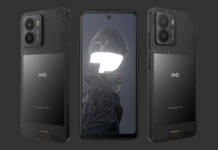At Facebook’s recent event, CEO and founder Mark Zuckerberg announced the much-anticipated Facebook phone, but it isn’t what many in the industry predicted. Instead of forking Android like Amazon did for its Kindle Fire tablets, Facebook has built a new home screen interface and partnered with HTC to launch a phone with Facebook’s home alternative pre-installed. The home screen, more than any other part of the phone, has become the heart of the experience.
Facebook is, of course, far from the first to rethink Android’s home screen. All the major OEMs make huge changes to Android’s home screen, but third-party developers have long been in on the game too. Let’s take a look at how the home screen experience has changed on Android, and what each party gets out of the deal.
An OEM billboard
Anyone who’s ever bought a PC knows the soul-crushing experience of starting it up only to be greeted with row after row of trialware links on the desktop. Android phones aren’t quite that bad, but the home screen is still used as a vector for the promotion of certain services and features. This wasn’t always a main function of the home screen, though.
The first major OEM to skin Android was HTC with its Sense UIskin (later simplified to Sense). In the days of Android 1.5, Google wasn’t paying a lot of attention to how the platform looked. It was a very engineer-driven product. In fact, designers didn’t seem to figure in much at all until UI guru Matias Duarte was hired in mid 2010.
HTC was quickly followed by Samsung’s TouchWiz and Motorola’s Blur. These skins were also attempting to add functionality and cohesiveness to what was a lacking stock experience. With each iteration of Android, new versions of these skins were (eventually) released. It slowly became less about making Android better, and more about making it different. OEM home screens now focus on two things: branding and promotion.
Take a look at the default home screen on a Galaxy S III and you’ll see exactly what Samsung wants you to see. Samsung’s music and video hubs are on display. There are links to Samsung’s custom apps, and most of the widgets are TouchWiz-based. The company wants to get all its products in your face, and the home screen is the best way to do that. It also cultivates a distinctly Samsung look. This is a Galaxy phone first, and an Android device second.
HTC is also attempting to make its home experience more distinctive. The huge flip-clock was an iconic Android UI flourish for years, but HTC is moving on with features like BlinkFeed. This semi-curated feed of news and information is the default view on all new HTC devices starting with the One. This differentiates HTC’s devices, and makes for a good in-store demo.
The real advantage for OEMs to make custom home screen interfaces is this: most people don’t customize their home screens. The readership of Tested is a special case–we all tweak and abuse our devices in every way imaginable. But regular people? They often use the phone exactly as it came until it’s time for a new one, and that’s great for the OEM. Have you ever sat down at someone’s PC and noticed they left all the spec stickers on the case? It’s the same thing with the Android home screen.
When an OEM builds a custom home screen now, it has a chance to capture a user for the long term. People become accustomed to Samsung’s or HTC’s apps and services. They never see the “real” Android, and they’re never going to know there is such a thing.
Third-party Freedom
Whereas the OEM custom home screens are all about corralling people into an ecosystem and differentiating a product, the plethora of third-party Android home screens are geared toward user choice and customization.
These apps are for people that want more functionality than average users, and don’t mind a few bugs and workarounds. The current crop of 4.0+ launchers are rife with features. Apex, Nova, and Action Launcher are some of the most prominent, and all of them look much closer to stock Android than the OEMs do. This is just the starting point, though.
All the alternative home screens in Google Play encourage you to tweak the settings to adjust the experience. Changing the grid layout, moving UI elements around, and manipulating widgets and icons can produce a stunning, highly efficient home screen that caters to how you use your phone. If an animation is not to your liking, most home screen replacements will let you change it. Want to set up gesture controls? That’s doable as well. You’ve got the freedom to do so much with third-party launchers.
The drawback is that novice users can get themselves into trouble with alternative home screens. It’s easy to break things with all that freedom, and that can affect how useful the whole phone is. Disabling a third-party home screen once it has been set as default can also be incredibly confusing for average Android users.
Apps like these are going to continue being popular among power-users that want to get out of the experience prescribed by Samsung or HTC. The piling on of OEM features will never satisfy these folks.
The openness of Android that allows us to customize our devices can also be used to narrow the feature set, and that’s just what Facebook is doing.
Facebook Focuses with Home
Facebook is taking some things from OEMs, and some from third-party launchers to build Facebook Home. This home screen is a targeted experience that promotes its services (like OEMs do), but it also has some of the innate complications of a third-party home screen.
Facebook Home will be deployed in the Play Store and pre-installed on the HTC First. The home screen shell, Facebook app, and Facebook Messaging all combine in an unholy social alliance to create Facebook Home. Content from Facebook will infiltrate every area of the phone. Without even unlocking the device you will be able to scroll through pictures, comment, and Like content from your news feed.
Unlocking the device is handled by dragging your profile picture, or “bobble” from the bottom of the screen. You can jump directly into Messaging, the app launcher, or your last app. The app launcher is the closest thing to a standard home screen interface in Facebook Home. It’s a simply paged list of icons, not unlike an iPhone. You can also check-in and post statuses from this interface.
If you get a Facebook message, it will pop up as a “Chat head.” The tiny disembodied floating head of your friend will literally pop up on top of what you’re doing. The point — Facebook interactions takes precedence over everything else when you’re using Home as your launcher. I suppose this is what Zuckerberg meant by “people first,” but it strikes me as vaguely annoying.
Everything about notifications is going to be different in Facebook Home. The status bar and notification pulldown still exist, but you can’t see them from the home or lock screens. The HTC First will capture all your Android notifications and place them on the lock screen, but the version of Home in the Play Store is only going to have limited support for notifications. Basically, only Facebook notifications.
Android does have an accessibility API that lets apps read your notifications and replicate them in a different UI, so there is no technical reason Facebook Home should be limited in this way. The decision was probably made because enabling accessibility is a manual process, and the company doesn’t want to force users to jump through too many hoops. This is the kind of complication you’d expect from an independent developer in the Play Store, but not from Facebook.
Facebook Home is going to be offered on some of the most popular Android devices like the Galaxy S III and HTC One X+. Users will start seeing links to the Play Store version of Home in their Facebook app soon, and that’s going to be the first hurdle. People will install Facebook Home, and I suspect many of them won’t understand the app is designed to take over the phone. Suddenly, everything will be different, and that’s going to confuse plenty of people.
The goal here is the make Facebook the main function of the phone. That might not be appealing to everyone, but there are some Android users out there for whom the internet is simply a portal to Facebook. Just like Samsung wants to capture users for its services, Facebook wants everyone playing in its ecosystem. This could hurt Google in the long run if a substantial number of Android users get used to Facebook running their phones.
There will be some bumps along the way as dissatisfied users struggle to remove Facebook Home, but it will eventually catch on with its target demographic. Heavy Facebook users are probably going to enjoy an entire experience built around the social network. For anyone that likes the advanced features of Android like customization, widgets, and notifications, Facebook Home will remain a curiosity at best.
Source: Tested
Related Posts:
Buy Facebook girlfriend for $39
The culture of sexual bullying and voyeurism
Bang your Facebook friends!
Facebook turns Nine! I hate you like I love you
How to make Free Calls through iPhone Facebook App
Source: Tested
Related Posts:
Buy Facebook girlfriend for $39
The culture of sexual bullying and voyeurism
Bang your Facebook friends!
Facebook turns Nine! I hate you like I love you
How to make Free Calls through iPhone Facebook App
www.theunbiasedblog.com










